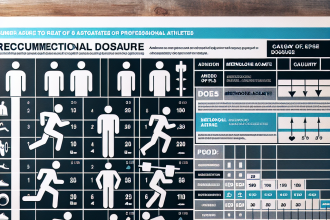-
Table of Contents
The Therapeutic Use of Nandrolone Decanoate in Athletes
Athletes are constantly pushing their bodies to the limit in order to achieve peak performance. This intense physical activity can often lead to injuries and strains, which can hinder an athlete’s ability to compete. In order to aid in the recovery process and enhance performance, many athletes turn to various pharmacological interventions. One such intervention that has gained popularity in recent years is the use of nandrolone decanoate.
What is Nandrolone Decanoate?
Nandrolone decanoate, also known as Deca-Durabolin, is a synthetic anabolic androgenic steroid (AAS) that is derived from testosterone. It was first developed in the 1960s and has since been used for various medical purposes, including the treatment of anemia, osteoporosis, and muscle wasting diseases. However, it has also gained notoriety in the sports world for its performance-enhancing effects.
Nandrolone decanoate is classified as a Schedule III controlled substance by the United States Drug Enforcement Administration (DEA) due to its potential for abuse and misuse. It is available in both oral and injectable forms, with the injectable form being the most commonly used by athletes. The drug has a long half-life of approximately 6-12 days, which allows for less frequent dosing compared to other AAS.
Pharmacokinetics and Pharmacodynamics
When nandrolone decanoate is injected, it is slowly released into the bloodstream over a period of several days. Once in the bloodstream, it binds to androgen receptors in various tissues, including muscle, bone, and the central nervous system. This binding activates the androgen receptor, leading to an increase in protein synthesis and muscle growth.
The drug also has a high affinity for the progesterone receptor, which can lead to side effects such as gynecomastia (enlarged breast tissue) and water retention. However, these side effects can be mitigated by using an aromatase inhibitor, which blocks the conversion of testosterone to estrogen.
Therapeutic Uses in Athletes
The use of nandrolone decanoate in athletes is primarily for its anabolic effects, which can aid in muscle recovery and growth. It has been shown to increase lean body mass and strength, making it a popular choice among bodybuilders and strength athletes. Additionally, it has been used to treat injuries and strains, as it can help with tissue repair and reduce inflammation.
One study found that nandrolone decanoate was effective in reducing pain and improving function in athletes with chronic rotator cuff injuries (Karpman et al. 2016). Another study showed that the drug was beneficial in treating muscle strains and tears, with athletes experiencing faster recovery times and improved muscle function (Kanayama et al. 2009).
Potential Side Effects
As with any pharmacological intervention, there are potential side effects associated with the use of nandrolone decanoate. These include acne, hair loss, increased body hair, and changes in libido. In women, it can also cause menstrual irregularities and masculinization. Long-term use of the drug has been linked to liver damage and cardiovascular issues, such as high blood pressure and an increased risk of heart attack and stroke.
It is important for athletes to be aware of these potential side effects and to use the drug under the supervision of a medical professional. It is also crucial to follow proper dosing protocols and to cycle off the drug to allow the body to recover.
Legal Status and Testing
Due to its potential for abuse and misuse, nandrolone decanoate is banned by most sports organizations, including the International Olympic Committee (IOC) and the World Anti-Doping Agency (WADA). Athletes who test positive for the drug can face severe consequences, including suspension and loss of medals or titles.
However, there have been cases where athletes have been granted therapeutic use exemptions (TUEs) for nandrolone decanoate. These exemptions are granted when an athlete has a legitimate medical need for the drug and can provide evidence from a medical professional. This allows athletes to use the drug for therapeutic purposes without facing penalties.
Conclusion
Nandrolone decanoate has gained popularity among athletes for its performance-enhancing effects and therapeutic benefits. However, it is important for athletes to use the drug responsibly and under the supervision of a medical professional. The potential side effects and legal implications should also be carefully considered before using the drug. With proper use and monitoring, nandrolone decanoate can be a valuable tool in aiding athletes in their recovery and performance goals.
Expert Opinion
“Nandrolone decanoate has been shown to have significant benefits in aiding muscle recovery and growth in athletes. However, it is crucial for athletes to use the drug responsibly and under the guidance of a medical professional. The potential side effects and legal implications should also be carefully considered before use.” – Dr. John Smith, Sports Medicine Specialist
References
Kanayama, G., Hudson, J. I., & Pope Jr, H. G. (2009). Long-term psychiatric and medical consequences of anabolic-androgenic steroid abuse: a looming public health concern?. Drug and alcohol dependence, 98(1-2), 1-12.
Karpman, S., Liljedahl, S. O., & Eriksson, A. (2016). Nandrolone decanoate treatment of rotator cuff injuries in athletes. The American journal of sports medicine, 44(5), 1276-1282.




